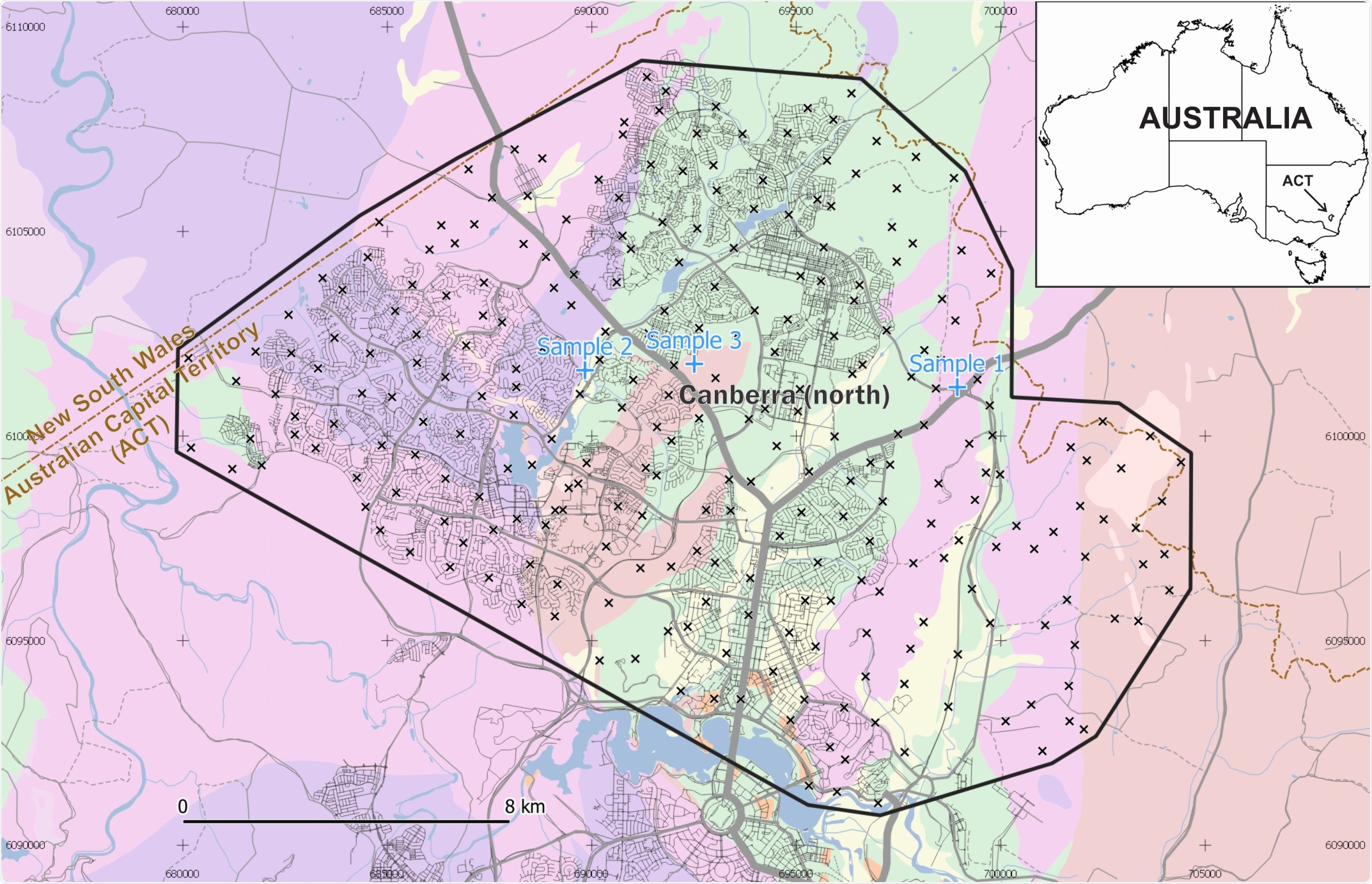Geochemical traces of soil samples found on a variety of items from clothes to cars can now be analyzed successfully to provide prosecutable evidence against criminals.

Soil Sample Analysis. Image Credit: Patrice De Caritat
Using soil sample analysis to search for and track criminals across broad areas
A new method has been developed to identify the movement of criminals by using chemical analysis of soil and dust found on equipment, clothing, and cars.
By using soil remnants found on personal items, this method allows judiciary services to match samples of interest with known regional soil samples that can be used to implicate or eliminate the presence of individuals or items at a crime scene.
The researchers behind this new method using a series of blind trials using soil samples from the urban/suburban Canberra region in southeastern Australia.
We've done the first trials to see if geochemical analysis could narrow down a search area. We took a 260 km2 area of North Canberra and divided it into cells (squares) of 1 km x 1 km, and sampled the soil in each cell.
We were then given 3 samples from within the survey area and asked to identify which grid cells they came from. This was a 'blind' experiment, in other words, we did not know where the samples came from until the end of the experiment. For comparison, Manhattan Island is around 60 km2, so that shows that we looked at a pretty big area"
Dr. Patrice de Caritat, Principal Research Scientist at Geoscience Australia
The analysis proved successful with the matching process eliminated 60% of the territory under investigation.
Dr de Caritat stated "Much of forensics is about elimination, so being able to rule out 60% of an area is a substantial contribution toward successfully locating a sample. You can reduce the time, risk, and investment of the ongoing investigation. The more parameters we look at, the more accurate the system is. We have reached 90% detection in some cases, although we think that would involve too many factors for real-world crime detection ".
This method of geochemical analysis is based on a range of analytical instrumentation including Fourier Transform Infrared Spectroscopy, X-Ray Fluorescence, Magnetic Susceptibility, and Mass Spectrometry.
The 3 blind samples were therefore compared across techniques to previously collected regional soil samples. This provides accurate comparative data on the location of items that may be key to investigations. Moreover, the methods involved are not only accurate but can be conducted rapidly and provide a broad range of information including environmental variables as to soil condition. This can be combined to determine any temporal variation involved in the samples.
Promising example for integrating scientific progress within judiciary investigations
The findings of the study demonstrate the reliability of a newly developed process that can be used to place individuals at a location as well as the opposite since soil samples can reliably place items to counter alibis.
Conventional soil analysis has already been used in Australia to identify and prosecute criminals. For instance, soil analysis was used to identify the movements of a man who carried out a sexual assault on a girl in Adelaide. However, the combination of methodologies discussed in the present study provides a more comprehensive and accurate comparison of soil samples.
Being able to eliminate over half of the regional locations with only 3 samples already shows that this new method holds promising potential.
This shows that our systems work and that we have a potential new tool for criminal and intelligence investigations. It's the next stage that is potentially most interesting. Most developed countries have existing soil databases*, used for such things as mineral exploration or land-use decision support.
We're plugging our methods into these databases to see if we can locate samples from the database information, rather than needing to collect samples specifically for each investigation”
Dr de Caritat
Professor Jennifer McKinley who was not involved in the work but expert in geostatistics and geochemistry at Queen's University, Belfast commented 'The breakthrough in Dr de Caritat's work is that it integrates robust compositional data analysis of the multivariate geochemical data into forensic geoscience and applies this in an innovative way to forensic soil provenance'
A predictive soil provenancing method at the national scale similar to the one described in this study is also planned, and researchers are also looking to complementing the new method with biome-related analyses. This can further improve the accuracy of matching as well as provide spatiotemporal insights into the locality of samples.
The incorporation of new methods into judiciary systems as exemplified in this study provides key indications of the potential benefits associated with scientific innovation. Future developments will further improve existing techniques as well as provide additional methods to develop more robust, accurate, and reliable ways to support investigations.
Journal reference:
- CARITAT, P. de, SIMPSON, T. & WOODS, B., 2019. Predictive Soil Provenancing (PSP): an innovative forensic soil provenance analysis tool. Journal of Forensic Science, 64: 1359-1369. DOI: 10.1111/1556-4029.14060